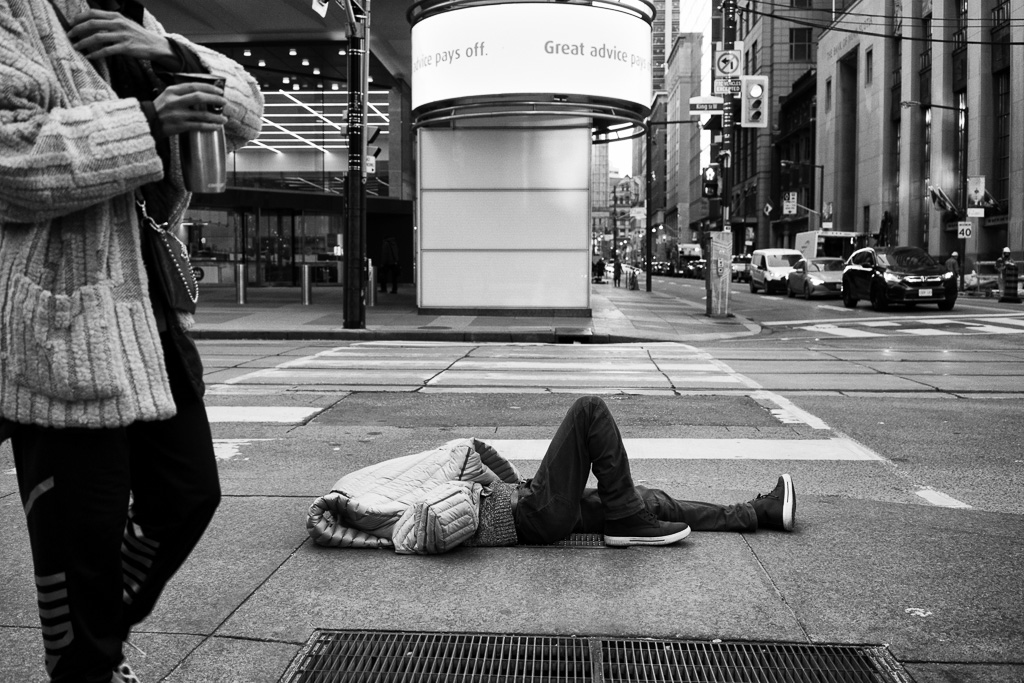
Capturing a moment of cognitive dissonance is like shooting fish in a barrel. A lot of times, I barely notice how one element of a photograph is at odds with another element. In this instance, I noticed a man lying on a vent in the heart of Toronto’s financial district and thought I should capture the moment as part of an ongoing effort to document the obvious rise of homelessness during the pandemic. It wasn’t until I got home that I noticed the sign overhead: Great advice pays off. There is an obvious incongruity between the tagline of a financial institution and a man with no more security than the coat over his head.
We used to call this sort of thing cognitive dissonance, but I don’t think the world has much use for that term anymore. The idea of cognitive dissonance used to be that we could throw competing values into the same space to produced a radical clash. This was a strategy that critics could deploy to expose a lie. Now, there are a lot of disillusioned critics wringing their hands and wondering why bother when we live in a post-truth world. Never has this been so evident than in the age of Trumpism which has ushered in a celebration of alternative facts, narratives unhinged from referents in the real world, and a willingness to stare lies squarely in the face and adopt them as truths.
Trump didn’t invent any of this, of course. He merely honed it into an art. Before him, there was Bernie Madoff who sold Ponzi schemes as legitimate financial practices, and George W. Bush who continued to rationalize a war with a lie even after the lie had been exposed, and before Bush there was Thatcher who insisted that the deregulation of financial markets would make life better for working class men and women even as misery spread all around her.
We don’t even wink anymore. We don’t even worry that a revelation will ruin our career. We’ve grown so inured to the lies that we face them straight on and continue on our way, as I did when I saw this lie and set up the shot without even thinking about it.